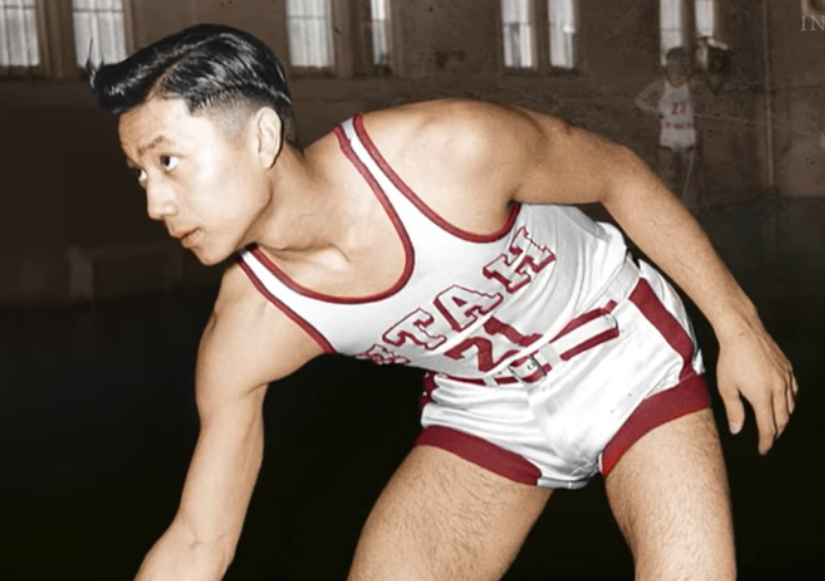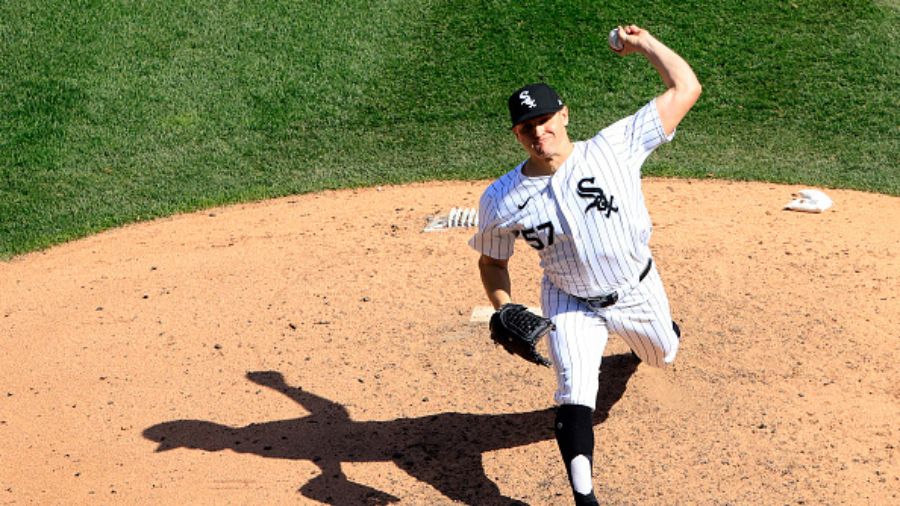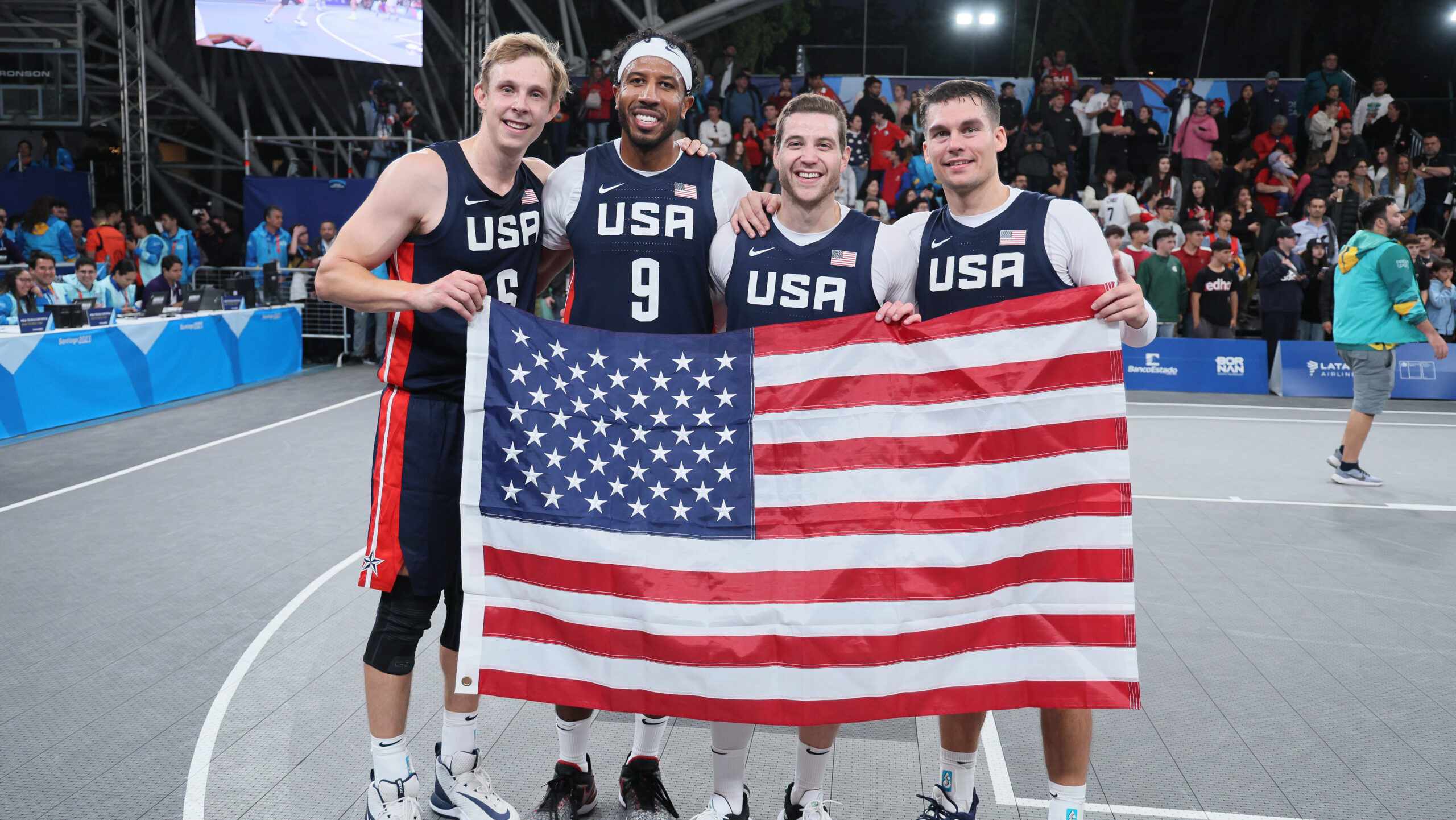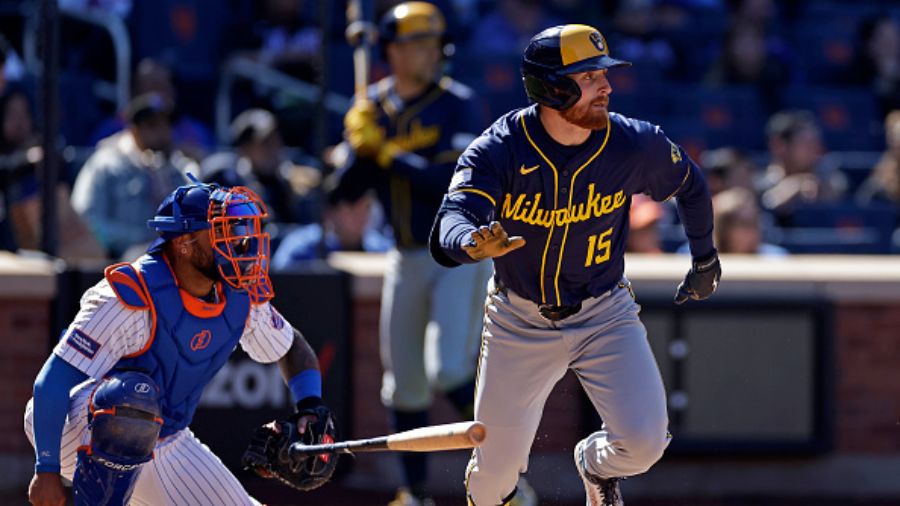Wataru Misaka: The Utah Native Who Broke Sports Barriers
Oct 11, 2022, 9:29 AM | Updated: Jan 11, 2023, 4:29 pm

Image of Wataru "Kilowatt" Misaka in the 1940's Utah Utes jerseys (Photo courtesy of UofU Athletics)
(Photo courtesy of UofU Athletics)
SALT LAKE CITY – When people think of Utah sports, it’s likely they will think of the household names who brought success to teams in the state. Such names probably include John Stockton, Karl Malone, and Nick Rimando. Then, they will probably think of hometown heroes such as Steve Young, Zach Wilson, and Steve Konowalchuk.
But, there is one man who isn’t as well known. He was born in the state, attended the University of Utah, and went on to break racial barriers in professional sports. His name? Wataru “Wat” Misaka.
A Professional Against All Odds
In the 1940’s, developments in World War II led to the internment of Japanese Americans living on the West Coast. Over 100,000 people of Japanese descent were relocated and interned across 10 camps in the United States. This was done out of fear for national security following the attack on Pearl Harbor. Today, it is seen as one of the biggest violations of civil rights in our nation’s history.
Misaka was the son of two Japanese immigrants, Tatsuyo and Fusaichi Misaka. Despite Utah having its own internment camp in Topaz, Misaka was not interned since he had lived in Utah and not a coastal state. In fact, he played in the 1944 NCAA Basketball Championship Game while the internment camps were still being used.
Misaka brought the Utes their first, and only, National Championship in 1944. The game was the first National Championship game to require an overtime period. The next championship game to go to overtime wasn’t until 1957.
At the time, the school had two names. The ‘Utes’ and the ‘Redskins’. In 1972, they dropped the ‘Redskins’ name and solely identified as the ‘Runnin’ Utes’.
In the middle of his two seasons playing for Utah, Misaka was drafted into the military. He eventually rose to the rank of Staff Sergeant before returning from service and leading the Utes to the 1947 National Invitation Tournament title.
Misaka was drafted by the New York Knicks in 1947. He was the first non-white player to play in the Basketball Association of America, which later became the NBA. Misaka broke the race barrier for basketball the same year that Jackie Robinson did in the MLB.
Who Is Wat Misaka?
Misaka was born in Ogden, Utah. He was the oldest of three brothers. Misaka recalls growing up poor, living in the basement of his father’s barber shop which was located between a bar and a pawn shop.
In Misaka’s childhood, he was constantly “denied service at restaurants and avoided on the street” due to his race.
Rather than letting that treatment get to him, Misaka represented both the United States and Japan to the fullest. He fought for the U.S. in the military while remaining grateful for his Japanese roots. This love, however, was not reciprocated.
“I was a man without a country,” Misaka said. “To the Japanese, I was an invader. Americans didn’t trust me because I was Japanese.”
Although Misaka’s professional career was short-lived, his play on the court and effect on the game cannot be understated. He wasn’t your stereotypical pro-basketball player. At 5’7″ and 150 pounds, he was smaller than the vast majority of his competition. It was his defense and quickness that set him apart from the rest. Misaka was constantly referred to as a “speed demon.”
Known for his abundance of energy on the hardwood, Wat “Kilowatt” Misaka’s nickname was fitting to say the least. Ogden, Misaka’s hometown, honored him by naming the court in Liberty park “Kilowatt Court“.
In 2008, a documentary recapping Misaka’s storied life and career was released called “Transcending: The Wat Misaka Story.”
The 1944 NCAA Tournament
The Utes path to becoming NCAA champions was like no other. There was a common theme in Misaka’s life. Fighting through controversy.
Due to a tragic crash that killed Arkansas’ athletic director and seriously injured two of their starters, a replacement team was needed in the tournament. The Utes had previously chosen to compete in the NIT because it offered more “money and prestige” at the time. After losing to a powerhouse Kentucky team in the NIT, the tragic circumstances gave Utah another chance. The team packed up and headed to Kansas City.
The Utes found themselves in the championship game following close wins over Missouri and Iowa State, in a tournament they weren’t even supposed to be in.
The championship game was held in Madison Square Garden in front of nearly 15,000 fans. The game was against Dartmouth, who was favored heading into the match. Misaka and the Utes pulled out a 2-point victory in overtime.
Each player on the championship team was given a red blanket embroidered with a white U and a championship emblem. In an act of good faith, Misaka presented his teammate’s, Masateru Tatsuno, blanket to his interned family in the Topaz camp following the championship run.
Misaka: A New York Knickerbocker
The Knicks had won their first two games of the season. Misaka was putting up admirable numbers, especially considering he was a 5’7″ rookie coming off of the bench.
Despite this, following the third game of the season, Misaka was informed that the team was letting him go. He never played basketball again.
Misaka did not become a basketball legend by traditional means. He was able to win at every level leading up to his short professional stint. But, was seemingly not given a fair shot in the pros which led to the end of his basketball career.
Misaka didn’t look back on his career with disfavor, but he rather appreciated what was. He says his release from the Knicks wasn’t completely unwarranted, as he was a small rookie and the Knicks had an abundance of guards at the time.
Regardless of how his pro-career turned out, he is still respected and loved by the Knicks organization.
Wataru Misaka passed away on Thursday at the age of 95.
Drafted in 1947 by the Knicks
NCAA champion (Utah)
First non-white player and Asian descent player to play in the NBATrailblazer. #NewYorkForever pic.twitter.com/weDzyX79Yy
— NEW YORK KNICKS (@nyknicks) November 21, 2019
The Legacy Left Behind
The Wat Misaka documentary says that Misaka was offered a spot on the Harlem Globetrotters following his fall-out with the New York Knicks. But, he declined.
After leaving basketball behind for good, Misaka got married and became an electrical engineer. This Continuum piece says that Misaka was retired but still consulting with a friends circuit-board business in 2010, at 86 years old.
Misaka was an avid bowler and golfer in his later adult years. He was inducted into the Utah Sports Hall of Fame in 1999 and the Crimson Club Hall of Fame in 2011.
Satisfied with his life out of the limelight, Wataru Misaka passed away in 2019 at the age of 95. A pioneer gone, but never forgotten.
Chandler Holt is a Digital Sports Producer for KSLSports.com, specializing in all things basketball and football. Follow Chandler on Twitter at @ChandlerHoltKSL.












